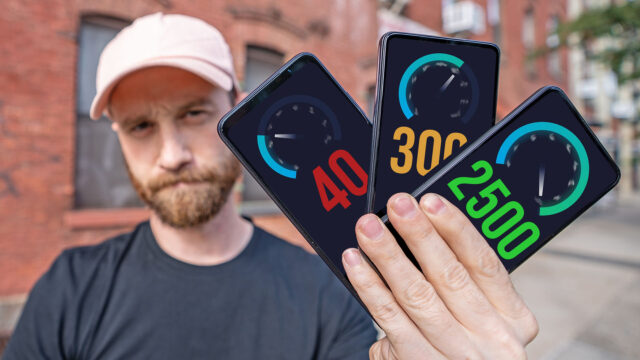Razer Blade Stealth 2020 Complete Walkthrough: The Most Powerful Ultrabook Gets Faster
One of my favorite little ultrabooks just got a refresh. This is the Razer Blade Stealth 2020 with a GTX 1650 Ti GPU in it along with some other nice bumps in the specs which we’ll talk about in a sec.
For now, Razer sent me a Razer Blade Stealth 2020 to borrow so let’s go through it in this complete walkthrough.
Now, if you’re not familiar, a complete walkthrough on this channel is where I try and go through every feature I possibly can on a new device so you guys are better prepared should you be in the market to actually go buy one.
With that said, there’s a lot to go through, so let’s get started with the hardware.
The new Stealth comes in two models that are basically identical except for the screen options.
Firstly, we have a 13.3” FHD non-touchscreen display with an anti-glare coating that is apparently the world’s first 13.3” display on an ultrabook to feature a 120hz refresh rate.

This means that screen can refresh the image on it up to 120x a second vs the more traditional 60 for the more common 60hz displays. For most of your day to day tasks, you’ll be hard pressed to notice much difference though (except MAYBE in a browser while scrolling) but the big benefit to this is seen when playing video games so it means smoother graphics and being able to react faster to things on the screen.
In addition to that higher refresh display, we also have a 4K touchscreen model for an extra $200.

Both screens though cover 100% of sRGB, have 4.9mm bezels on the sides (the bottom one is much larger you’ll notice, for example), we have a 16:9 aspect ratio on them, and Razer apparently individually calibrates the displays in the factory.

The only other difference between the two is that the 4K model is 1/10th of a pound heavier which is identical to the older model differences between the touch screen and non-touch screen models so it’s safe to say that’s literally the difference in weight between the two display technologies.
The chassis are made out of a CNC-milled unibody design that Razer is sort of known for at this point along with the new clean square lines that they’ve added relatively recently to the entire Blade lineup, and in my opinion, all of this definitely give it a much more premium look and feel than some other gaming laptops out there.

Something else, unmistakably Razer, is the three-headed snake logo on the back and since this is the “stealth”, it doesn’t light up like it does on the Blade 15 models and instead is two-tone and etched into the lid.
Above that screen, we have a we have a 720P webcam that can also be used for Windows Hello to unlock the computer. And, for anyone curious, that webcam looks like and the mics on the laptop sound like.

Beneath the screen, we have our RGB Chroma-enabled keyboard that, unlike the other larger Razer models, isn’t a per-key chroma but instead the entire keyboard is a single unit you can change the colors of.
Something interesting about this keyboard is that they changed the size of the shift key on the right to match the same size on the left (like most keyboards do) as well as gave this new Stealth half-sized arrow keys to have things line up a bit better. The old keyboard from last year’s Stealth never bothered me as much as the rogue function key on the 15” models (you cna see what I mean by that in any of my walkthroughs on the the 15” models linked here so I won’t get into that here), but I know others who were slightly annoyed by it.
Regardless, there is something about the keyboard that I have always liked–they have a good balance of clicky travel to them and I enjoy typing on this keyboard frankly. But it’s always nice to see a company taking user complaints into account here and actually fixing them based on that feedback.

Under that, we have our thankfully precision trackpad that if you aren’t familiar allows Windows to handle the drivers for the trackpad (compared to the OEMs that used to each have their own) and so it’s honestly more precise and can use Windows gestures, too which I use a lot.
Also, while using this Stealth I realize that there is something about the trackpad that even other Microsoft precision trackpad devices don’t have but I can’t quite put my finger on what it is (no pun intended). It just feels smoother to the touch and better frankly.

On either side of the keyboard, we have four speakers that are Dolby Atmos-enabled and they get pretty loud and for the most part sound pretty clear except for maybe at totally full volume there’s just a hint of distortion.
For ports, we have a USB Type-C 3.1 Gen 2 port, a USB Type-A 3.1 Gen 2 port and a 3.5mm audio jack on the left.
On the right, we have another USB Type-A 3.1 Gen 2 port and another USB Type-C 3.1 Gen 2 port that is also Thunderbolt 3 capable so you can connect this to an eGPU to be able to use an even more powerful graphics card (see my video on that here if curious).
For connectivity, we have Bluetooth 5.1 and Wifi 6 (802.11ax in other words and you can check out my Decodr episode, my explainer series here on the channel, for what that actually means.

For battery, we have a 53.1Wh battery in here that Razer claims will get 8 hours of battery life. And just like the older Stealth it comes with a 100W USB-C charger that I appreciate it pretty tiny making for even less weight to carry around with the laptop.
Now, honestly, this is a pre-production model as they won’t actually go on sale for a bit now so it’s not really fair for me to show benchmarks or battery tests on it, but you can check out my real-world test I did on the old model for how that battery lasted while editing vs web browsing as well as how fast it charged and I’d assume this one will be similar if only slightly worse thanks to a more powerful CPU.
Which I guess we should now talk about.
Under the hood, we have the aforementioned NVIDIA GTX 1650 Ti Max-Q GPU with 4GBs of GDDR6 VRAM (compared to the GDDR5 VRAM from last year’s GTX 1650) and 1024 cuda cores. And with that, NVIDIA says it’ll have about a 10% performance boost over the 1650 which isn’t much but regardless this is still the most powerful GPU in a laptop of this size. Period.

Paired with that is 16GBs of fixed GDDR4X RAM compared to the GDDR4 in last year’s model, and we have a quad-core 10th Gen i7-1065G7 processor that has been upgraded to run at 25W instead of the 15W of last year’s model. That bump in wattage will translate to about a 25% performance bump in the CPU according to some popular testing sites like Anandtech and that’s a decent amount at least.
For storage, you get the typical one option of 512GBs in the form of a PCIe m.2 SSD but regardless, you can easily upgrade that yourself which is great.
Thanks to Razer’s no bloat policy, it runs Windows 10 and doesn’t have any apps from Razer pre-installed like other manufacturers might do (we do, however, have some Microsoft-added bloatware but you can right-click and uninstall it easily enough).
The one app that is from Razer, I don’t consider bloatware, and it’s called Synapse and it allows you to customize the Chroma as mentioned, but also create Macros, adjust fan speed & performance settings, etc.
The Razer Blade Stealth 13 GTX 1650Ti model costs $1799.99 for the FHD 120hz model and $1999.99 for the 4K touchscreen model.
You can head to this link here for more info on both and the cheapest price I could find.
And there you go, guys. Feels very much to me like an incremental bump for the Stealth line up but the keyboard change will be big for some people as well as the CPU and the refresh rate. Frankly, to me, it’s still the most power you can get for video editing or gaming in the smallest package and while it’s not quite powerful enough to edit some of my videos (when I use RAW footage for example) it can handle 4K footage so long as you don’t use too many crazy effects.
And as someone who, normally at least, travels as much as I did, I love the idea of having a laptop this small and light that I can still edit videos on. I can’t find a single other laptop in this size that comes close.
Let me know in the comments below, what you guys think of the new Stealth, this video, etc. and don’t forget to subscribe to my weekly email newsletter for more tech stuff.















